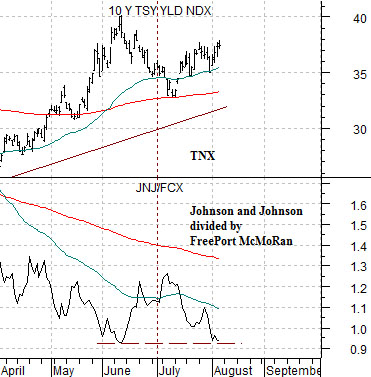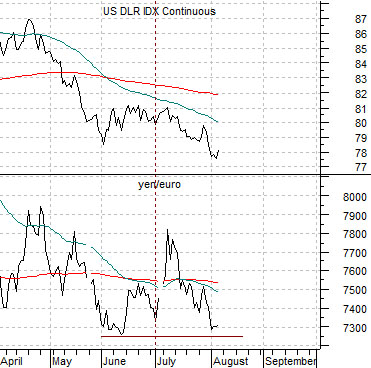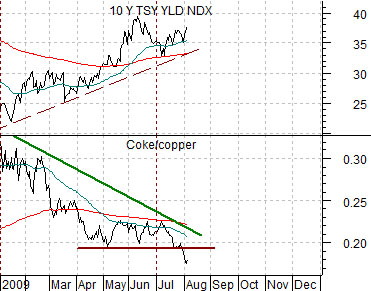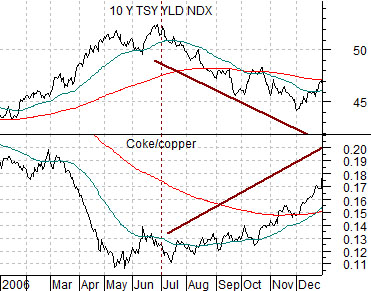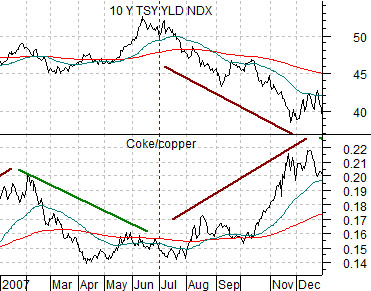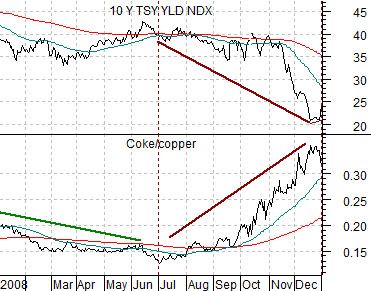Aug. 6 (Bloomberg) — Fraudulent or deceptive actions in the wholesale oil market may draw fines of as much as $1 million a day under a rule issued today by the Federal Trade Commission… Under the measure, practices such as keeping tankers offshore and crimping U.S. supply, or closing refineries for maintenance at a time that coincides with high price or demand, or exporting at a low price just to manipulate U.S. stores of oil will get a closer look…
Unrelated to any of this- of course- we note that on August 21 of 2008: A problem at Petro-Canada’s refinery near Edmonton has led to gas shortages or pumps running dry at as many as 90 Petro-Canada and independent stations in B.C. and Alberta, CBC News has learned. And on August 2nd of this year- also from CBCNews: Alberta motorists continued to be plagued by a fuel shortage across the province over the weekend. A major storm last month forced shutdowns at both Petro-Canada’s refinery in Edmonton and Imperial Oil’s facility in Strathcona County. More than 50 Petro-Canada service stations throughout Alberta were out of gas altogether over the weekend.
We do not wish to imply that gasoline shortages and higher prices in oil-rich Alberta during the peak of the summer driving season are anything but unlucky coincidences. The facts as presented may make that implication but we most certainly do not.
In any event… the U.S. employment report is due out today and as always it has the capacity the roil the bond market. With that in mind we start off with a chart comparison at top right between 10-year Treasury yields (TNX) and the ratio between Johnson and Johnson (JNJ) and FreePort McMoRan (FCX). Below right we feature the U.S. Dollar Index (DXY) futures and the cross rate between the Japanese yen and the euro.
Our point is that it is still not completely clear that the cyclical trend is accelerating to the upside. Here and there the charts suggest that it is but we can still make the case that the issue has yet to be resolved. 10-year yields remain below the June peak and the JNJ/FCX ratio (which is an identical chart this year to the yen/euro cross rate) remains marginally above the June lows. It may well be that BRIC-driven cyclical growth pushes yields to new highs into the autumn but until that happens we will tend to err on the side of caution. We will expand on this somewhat on the following page.
Equity/Bond Markets
We have included four charts of the yield index for 10-year U.S. Treasuries (TNX) and the ratio between the share price of Coca Cola (KO) and copper futures.
The chart at top right is from 2006, the next chart is from 2007, the bottom right chart is from 2008, while the chart below is from the current time period.
We have argued this point on many occasions but the idea is that over the past few years the underlying trend for the markets has favored commodity-based cyclical growth and rising interest rates through the first six months of the year and commodity-based cyclical weakness and falling interest rates through the back half of the year.
The point is that in 2006, 2007, and 2008 10-year Treasury yields rose from January through into June while the Coke/copper ratio declined. From July through December yields declined and the Coke/copper ratio resolved upwards.
On the one hand… the peak for 10-year Treasury yields was made in June this year which is entirely consistent with the recent trend. On the other hand… the Coke/copper ratio made new lows into early August.
The argument that we made on today’s first page is that by the barest of margins we can still make a fairly compelling case that cyclical growth peaked back in June. Where the argument gets stressed, however, is in any ratio or relationship that includes copper prices or Asian equity markets.
We have made the argument recently that the long-term trend is pulling U.S. yields lower even as periodic bouts of Asian or commodity price strength pushes them higher. We actually hope- for all concerned- that the Asian/commodity trend does not drive long-term Treasury yields to new highs later this quarter because we suspect that while this will be near-term equity markets positive it will also lead to yet another financial markets crisis and an extension of the current recession.
Our basic point is that recessions are supposed to change trends and to date the trend is having a hard time changing. The longer the Asian/commodity theme dominates the markets the greater the risk of another series of crises along with stagnant U.S. economic growth.
